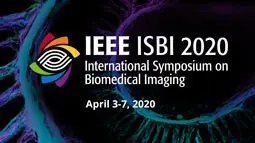A Clinical Workflow Simulator for Intelligent Chest X-ray Worklist Prioritization
Ivo Matteo Baltruschat, Leonhard Steinmeister, Harald Ittrich, Gerhard Adam, Hannes Nickisch, Axel Saalbach, Michael Grass, Tobias Knopp
-
Members: FreeSPS
IEEE Members: $11.00
Non-members: $15.00Length: 06:23
03 Apr 2020
Growing radiologic workload and shortage of medical experts worldwide often lead to delayed or even unreported examinations, which poses a risk for patient?s safety in case of unrecognized findings in chest radiographs (CXR). The aim of this work was to evaluate, whether deep learning algorithms for an intelligent worklist prioritization can optimize the radiology workflow by reducing the report turnaround times (RTAT) for critical findings, instead of reporting according to the First-In-First-Out-Principle (FIFO). Furthermore, we investigated the problem of false negative prediction in the context of worklist prioritization. We developed a simulation framework by analyzing the current workflow at a university hospital. The framework can be used to simulate clinical workdays. To assess the potential benefit of an intelligent worklist prioritization, three different workflow simulations were run and RTAT were compared: FIFO (non-prioritized), Prio1 and Prio2 (prioritized based on urgency, without/with MAXwait). For Prio2, the highest urgency will be assigned after a maximum waiting time. Examination triage was performed by ""ChestXCheck"", a convolutional neural network, classifying eight different pathological findings ranked in descending order of urgency: pneumothorax, pleural effusion, infiltrate, congestion, atelectasis, cardiomegaly, mass and foreign object. For statistical analysis of the RTAT changes, we used the Welch?s t-test. The average RTAT for all critical findings was significantly reduced by both Prio simulations compared to the FIFO simulation (e.g. pneumothorax: 32.1 min vs. 69.7 min; p < 0.0001), while the average RTAT for normal examinations increased at the same time (90.0 min vs. 69.5 min; p < 0.0001). Both effects were slightly lower at Prio2 than at Prio1, whereas the maximum RTAT at Prio1 was substantially higher for all classes (e.g. pneumothorax: 895 min vs. 694 min), due to individual examinations rated false negative. Our simulations demonstrated that intelligent worklist prioritization by deep learning algorithms reduce significantly the average RTAT for critical findings in chest X-ray while also maximum RTAT.



